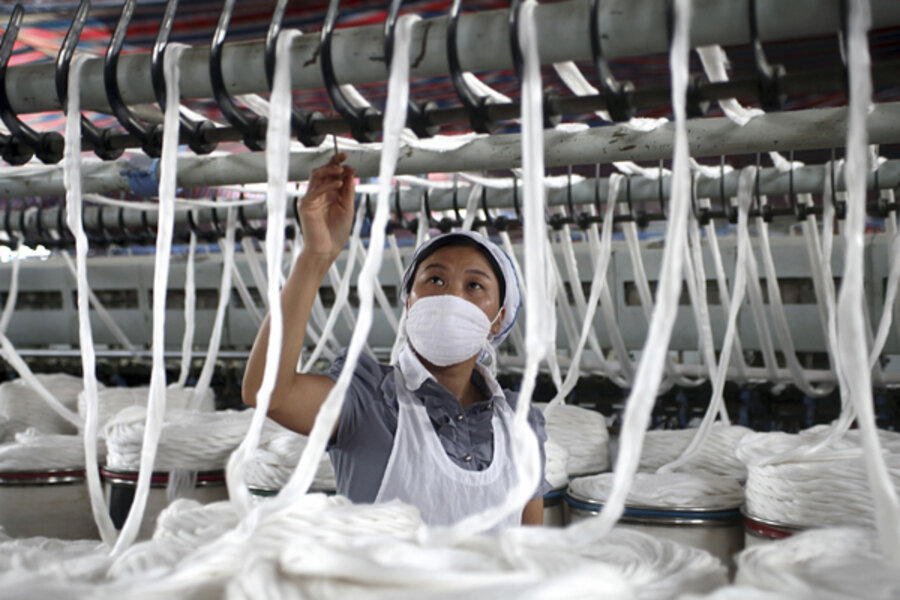Beijing on slow GDP growth: 'slower is healthy'
Loading...
| Beijing
China’s gross domestic product (GDP) growth slowed in the second quarter to 7.5 percent, testing Beijing’s determination not to be panicked into artificially pumping up the Chinese economy by bad numbers .
The annualized growth rate, down from 7.7 percent from the first quarter of the year, is enviable by international standards, but it is the worst Chinese performance in 23 years, following two decades of breakneck development.
The slowdown is partly a result of sluggish exports as Europe and the United States struggle to recover from the financial crisis; but it is largely due to government efforts to rein in credit, even at the cost of growth.
The second quarter growth rate matches the authorities’ predictions for 2013, as they seek to shift the Chinese economy away from its traditional reliance on exports and investment, and toward more sustainable growth in consumption.
That is a goal long urged on China by the US and other nations who are keen to see the Chinese market for their exports grow.
Officials here say they are confident that the Chinese economy is on track and that slower growth is healthy.
“Some measures … will inevitably have some impact on growth in the short term, but they will benefit our economy in the long run,” Sheng Laiyun, spokesman for the National Bureau of Statistics, told reporters on Monday.
Since the new government took office in March, it has been sending signals that it is no longer ready to follow tradition and combat any fall in economic growth rates with a surge in credit.
“The government now is sitting by and allowing the economy to do a natural deceleration,” says Arthur Kroeber, head of the GaveKal Dragonomics economic consultancy in Beijing. “It is not jumping in to stimulate the economy and keep it artificially high.”
That is in marked contrast to Beijing’s reaction to the 2008 financial crisis, which was to launch a massive stimulus plan that kept the economy humming even as most of the rest of the world went into recession.
That huge credit boom, however, is leading now to a debt hangover and fears that the loans so easily made five years ago will soon go bad. The government is now cracking down on credit growth, trying to reduce the economy’s reliance on debt.
While some economists say the Chinese government cannot afford to let GDP growth fall below 7 percent a year for fear of not creating enough jobs and fomenting social unrest, that still seems like a distant problem.
The labor market in China is still tight, employers complain, and urban wages have been rising by nearly 20 percent a year since 2010, according to official figures.
The effect of China’s “one child policy,” in place for 30 years, means that workers are likely to be in short supply for the foreseeable future.
“That makes it a good time to carry out structural reforms, because you can do it without too much social tumult,” suggests Mr. Kroeber.
Still, the government’s stated commitment to economic reform will be put to tough tests, as giant ship builder Rongsheng Heavy Industries is already showing. China’s largest private shipbuilder, suffering from a shrinking order book, has laid off 8,000 workers and applied to the government for financial aid.
If the government sticks to its guns, companies like Rongsheng are likely to go bankrupt.
“In the macro sense, everything will probably all work out,” predicts Kroeber. “At the micro level, when it comes to corporate stress, we can expect a lot of bad news over the next 18 months.”








